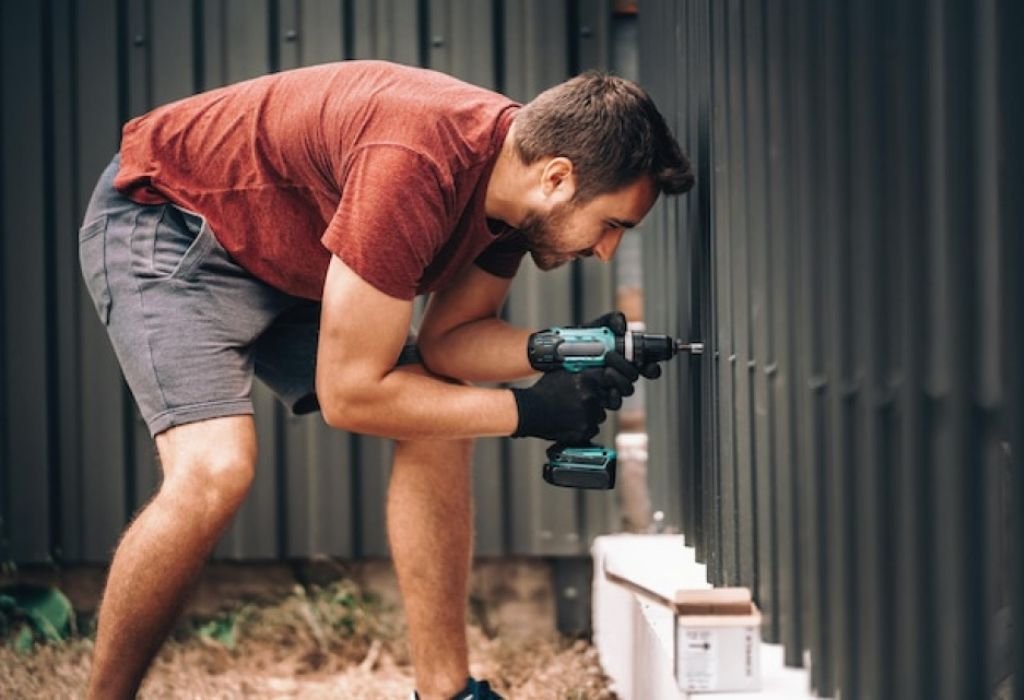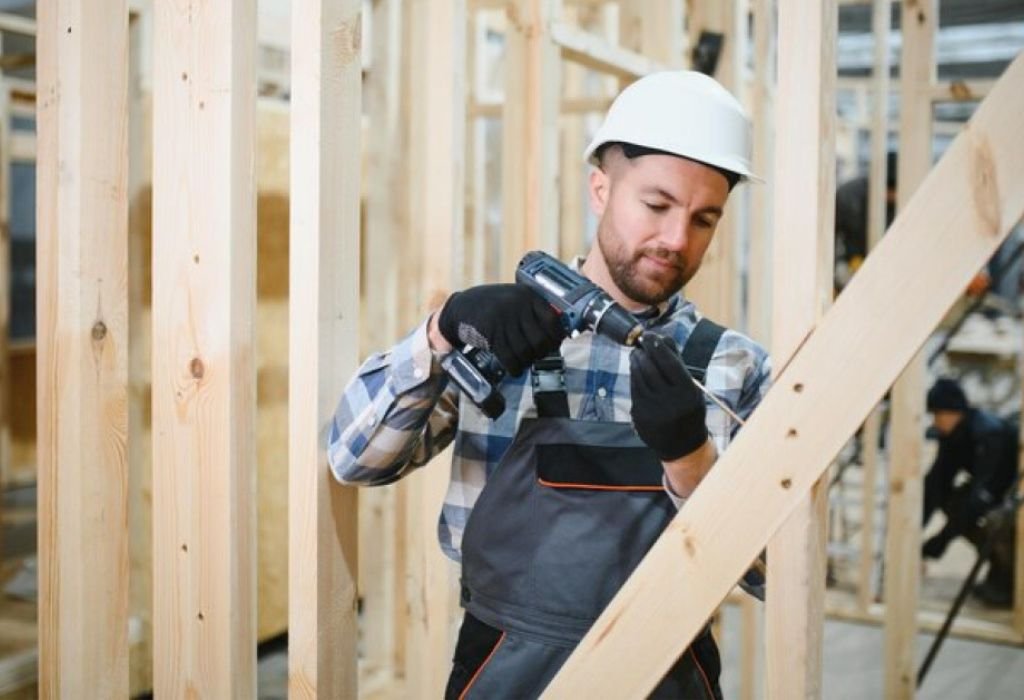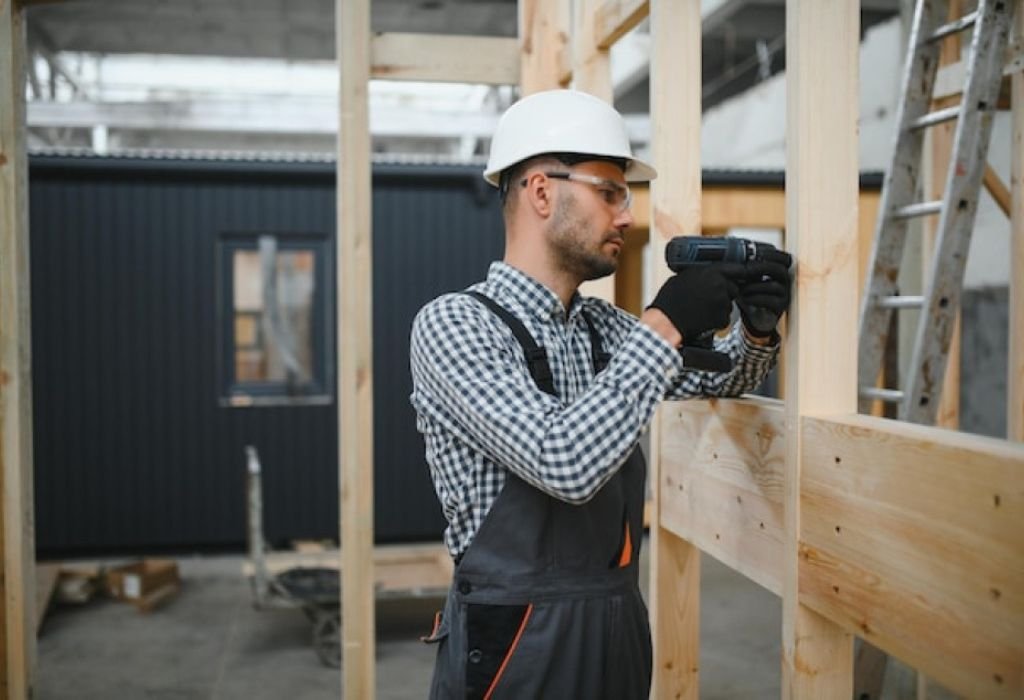Many people pick up an impact driver and assume it can replace a drill. After all, both tools look similar, and both spin a bit fast enough to bore into material.
The question “can you use an impact driver as a drill” is one of the most common among new tool owners.
At first glance, the answer seems obvious, but the reality is more complicated.
Using an impact driver incorrectly often leads to stripped screws, broken bits, or damaged surfaces.
These mistakes not only cost money but can also put safety at risk.
According to the U.S. Consumer Product Safety Commission, more than 135,000 people end up in emergency rooms each year due to power tool injuries 【https://www.cpsc.gov/Research–Statistics/NEISS-Injury-Data】.
Choosing the right tool for the job is one of the simplest ways to reduce this number.
Impact drivers are designed for fastening tasks, delivering quick bursts of torque to drive screws into dense materials.
Drills, on the other hand, provide steady rotation for clean, precise holes in wood, metal, and plastic.
Trying to use one as the other is where confusion and frustration often begin.
While an impact driver can drill in some cases, it does not excel at precision or versatility.
Understanding the pros, cons, and best practices makes the difference between success and wasted effort. This guide will explore when you can and cannot use an impact driver as a drill, what limitations to expect, and how to get the best results without damaging your tools or projects.
What an Impact Driver Is Designed For

Impact drivers are specialized tools created to deliver high torque. Their concussive action allows screws and bolts to be driven into hard surfaces quickly.
Unlike drills, impact drivers are not meant for making clean, precise holes. Instead, they shine in construction, decking, and automotive fastening tasks.
The quick-release chuck on an impact driver only accepts hex-shank bits. This limits its compatibility compared to the wider range of round-shank drill bits.
Despite these limitations, impact drivers are incredibly efficient for fastening. They make tasks faster and reduce strain on both the tool and the user.
What is an impact driver used for?
It is designed for fastening screws and bolts with high torque.
Can it replace a drill completely?
No, it cannot perform all drilling functions efficiently.
Why is it so powerful?
It uses concussive impacts to deliver torque.
Is it only for professionals?
No, DIY users benefit from its efficiency too.
How Drills Differ from Impact Drivers
Drills are designed for versatility and precision. They are capable of making holes in wood, metal, plastic, and other materials.
Their steady rotational force makes them better suited for accuracy. A drill can handle a wide range of accessories, from spade bits to hole saws.
Impact drivers, on the other hand, use bursts of torque. This makes them excellent for fastening but less effective for drilling tasks.
For this reason, many professionals and DIYers carry both tools. Each one complements the other in a toolbox.
What makes a drill better for holes?
It spins steadily and accepts many bit types.
Can an impact driver hold drill bits?
Yes, but only hex-shank bits fit properly.
Which tool is more versatile?
A drill is more versatile for mixed tasks.
Why do pros carry both tools?
Each tool has strengths for different jobs.
Can You Drill with an Impact Driver?
Yes, you can drill with an impact driver, but the results depend on the material and the bit used. It works best in wood or soft materials with hex-shank drill bits.
When used for drilling, an impact driver lacks the smooth control of a drill. The holes may come out less precise and slightly rough.
For short tasks or quick pilot holes, an impact driver can substitute for a drill. However, it struggles with metal and other dense materials.
In heavy-duty drilling, the lack of clutch and torque adjustment limits its usefulness. That is why many users keep both tools.
Can you drill into wood with an impact driver?
Yes, but results are rougher than with a drill.
Can you drill into metal with it?
Possible, but less efficient and harder on bits.
Can you drill masonry?
No, use a hammer drill instead.
Do you need special bits?
Yes, hex-shank bits are required.
Pros of Using an Impact Driver as a Drill
Impact drivers are lightweight and compact. This makes them easier to use in tight spaces where a drill may feel bulky.
Their high torque allows them to push through softwood quickly. For quick, simple jobs, they can substitute for a drill.
Having one tool that handles both fastening and basic drilling reduces clutter. This can be useful for DIYers who want fewer tools in their kit.
For outdoor projects like fencing or decking, they can handle most tasks without switching tools. This saves time and effort.
Why is it good for quick jobs?
It is easy to handle and fast.
Does it save space?
Yes, fewer tools are needed.
Can it handle long screws better than a drill?
Yes, torque is its main advantage.
Is it beginner-friendly?
Yes, with some practice and correct bits.
Cons of Using an Impact Driver as a Drill

Impact drivers cannot use standard round-shank bits. This limits drilling options compared to a drill.
They lack a clutch, which means you cannot adjust torque precisely. Overdriving screws and damaging materials is a common risk.
Drilling with an impact driver often produces rough holes. The lack of steady rotation affects the finish quality.
They also consume more battery power due to the constant impacts. This can reduce runtime during long projects.
Why does it damage bits faster?
The impacts create extra stress.
Why do holes look rougher?
The tool lacks steady rotation like a drill.
Can it crack delicate materials?
Yes, if torque is too high.
Does it use more battery power?
Yes, constant impacts drain batteries quickly.
Best Practices for Drilling with an Impact Driver
Always use hex-shank drill bits. Standard bits will not fit in the chuck.
For hardwood and metal, pre-drill pilot holes to reduce resistance. This prevents splitting and makes drilling smoother.
Apply steady forward pressure but let the tool do the work. Forcing it only increases wear on the bit.
Keep the driver straight when drilling. Angled drilling can cause uneven holes and damage to surfaces.
Can I use normal drill bits?
No, only hex-shank bits fit properly.
Should I pre-drill holes?
Yes, for dense wood or metal.
Do I need lubricant for metal drilling?
Yes, to reduce friction and wear.
How do I prevent overdriving?
Feather the trigger to control speed.
Situations Where an Impact Driver Works Fine as a Drill
An impact driver can substitute for a drill in small DIY tasks. Examples include assembling shelves or furniture.
It is effective for shallow pilot holes. These are often needed before driving long screws.
For outdoor jobs like fencing or decking, it can drill and fasten quickly. This makes it convenient when speed is more important than precision.
In emergencies, it can act as a backup drill when no other option is available. However, the results may not be perfect.
Is it good for furniture assembly?
Yes, it speeds up fastening.
Can it be used outdoors?
Yes, it is excellent for decks and fences.
Is it reliable for large construction projects?
Not for drilling, but excellent for fastening.
Can it replace a hammer drill?
No, it cannot handle masonry.
When You Should Use a Drill Instead
Drills are better for precision work. They are designed to create smooth and accurate holes.
They support a wider variety of drill bits. This makes them more flexible for different projects.
Drills are safer for delicate materials. They allow better torque control and adjustment.
They are essential for tasks that require accuracy and clean finishes. An impact driver simply cannot match this.
Is a drill better for pilot holes?
Yes, because it makes cleaner, more accurate holes.
Can a drill use more accessories?
Yes, drills support a wider range of attachments.
Does a drill handle softer materials better?
Yes, because it offers more control.
Is a drill safer for beginners?
Yes, less torque means fewer mistakes.
Choosing the Right Tool for the Job

If drilling is your main task, choose a drill. It provides the precision and flexibility needed.
If fastening is the focus, an impact driver is the best choice. It delivers torque and speed unmatched by a drill.
For the best results, many users own both. This ensures you have the right tool for any project.
Brushless models of both tools offer better performance and durability. They also extend battery life.
Should I buy both tools?
Yes, if budget allows, since they complement each other.
Which should I buy first?
A drill, because it is more versatile.
Are combo kits worth it?
Yes, many brands sell affordable drill + driver sets.
What brands are reliable?
DeWalt, Milwaukee, Makita, and Bosch are highly rated.
Future of Impact Drivers and Drills
The future may bring dual-purpose tools. These would combine the strengths of both drills and impact drivers.
Manufacturers are working on universal bit compatibility. This could reduce the need for multiple tools.
Smart tools with torque sensors are being developed. These will help beginners avoid mistakes and overdriving.
Battery technology continues to improve. Longer runtimes and faster charging are expected in the next generation of tools.
Will impact drivers replace drills?
Unlikely, because drills remain essential.
Will future bits be universal?
Yes, designs are moving toward universal fit.
Will smart tools help beginners?
Yes, torque sensors will improve accuracy.
Is demand increasing?
Yes, both DIY and pro markets are growing.
Conclusion
An impact driver can be used as a drill in certain situations. However, it cannot fully replace the versatility and precision of a drill.
The main limitations are bit compatibility, hole quality, and lack of torque control. These factors make it less efficient for clean drilling tasks.
For fastening, the impact driver is unmatched. For drilling, the traditional drill remains the better tool.
The best approach is to own both tools. This ensures you are prepared for any project, whether it requires precision holes or heavy-duty fastening.
For anyone asking “can you use an impact driver as a drill,” the answer is yes — but only in limited cases. Choose wisely, and you will save time, protect your tools, and achieve better results.

I’m John F. Nicholas, the founder, lead writer, and drill enthusiast behind 101drill.com. With years of hands-on experience in power tools and DIY projects, I created this platform to share practical knowledge, expert tips, and real-world insights to help others master the art of drilling.
